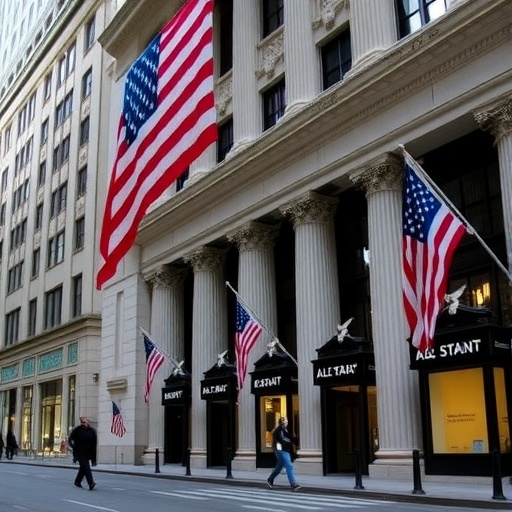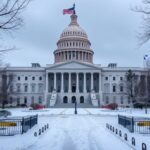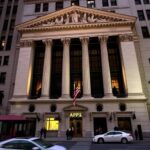As the US government shutdown stretches into its third week, Wall Street traders are scrambling for any scrap of data on the labor market, pinning their hopes on private payrolls reports from firms like ADP to fill the void left by the delayed official jobs report. This unprecedented data drought has heightened market volatility, with investors fretting over signs of a cooling hiring trend that could signal broader economic weakness.
Government Shutdown Paralyzes Bureau of Labor Statistics
The ongoing government shutdown, triggered by partisan gridlock over budget and immigration funding, has forced the Bureau of Labor Statistics (BLS) to suspend operations, including the release of the highly anticipated monthly jobs report. Normally scheduled for the first Friday of each month, this key economic indicator provides critical insights into unemployment rates, wage growth, and overall labor market health. But with federal employees furloughed, the October jobs report—covering data from the shutdown-impacted month itself—remains indefinitely postponed.
Economists estimate that the shutdown, now affecting over 800,000 federal workers, could shave as much as 0.3 percentage points off GDP growth in the fourth quarter if it persists. For Wall Street, the absence of this data is more than an inconvenience; it’s a blind spot in assessing the Federal Reserve’s next moves on interest rates. ‘The jobs report is the North Star for monetary policy,’ said Sarah Thompson, chief economist at a major New York investment bank. ‘Without it, we’re navigating in the dark, and markets hate uncertainty.’
Historical precedents underscore the stakes. During the 2013 shutdown, which lasted 16 days, the BLS delayed its report by a week, leading to a temporary spike in the VIX volatility index. This time, with the shutdown already surpassing that duration, analysts warn of prolonged ripples. The labor market, which added a robust 261,000 jobs in September according to the last BLS figures, now faces scrutiny over whether federal furloughs and reduced consumer spending are curbing hiring momentum.
ADP Report Emerges as Lifeline for Investors
Enter Automatic Data Processing (ADP), whose private payrolls survey has become the go-to proxy for the official jobs report. Released mid-month, the ADP National Employment Report uses anonymized payroll data from over 20 million US employees to gauge private-sector hiring trends. In its latest October reading, ADP reported a modest gain of 125,000 jobs, falling short of economists’ expectations of 150,000 and signaling a potential slowdown in the labor market.
This figure, while not identical to BLS data—ADP often underestimates by about 20,000 to 30,000 jobs—has nonetheless sent ripples through Wall Street. Stock futures dipped 0.5% in after-hours trading following the release, with tech and consumer discretionary sectors bearing the brunt due to their sensitivity to employment trends. ‘ADP gives us a pulse check,’ noted Mark Reilly, a senior strategist at Goldman Sachs. ‘But it’s no substitute for the comprehensive BLS breakdown, which includes government jobs and revisions that can swing markets dramatically.’
Diving deeper into the ADP data, sector-specific insights reveal mixed signals. Professional and business services added 42,000 jobs, buoyed by demand in consulting and IT, while leisure and hospitality saw a dip of 18,000 amid seasonal slowdowns exacerbated by the shutdown’s travel disruptions. Wage growth, a hot-button issue for the Fed, clocked in at 3.2% year-over-year, slightly below the prior month’s 3.4%, raising flags about inflationary pressures easing in the labor market.
Wall Street’s reliance on such private indicators isn’t new, but the government shutdown has amplified their influence. Trading volumes for labor-market-linked ETFs, like the iShares US Employment ETF, surged 25% on the day of the ADP release, as investors repositioned portfolios in anticipation of Fed Chair Jerome Powell’s upcoming comments.
Wall Street Braces for Fragile Hiring Equilibrium
Beneath the surface of these numbers lies a fragile equilibrium in the US labor market, where robust pre-shutdown growth now contends with emerging headwinds. The unemployment rate stood at a 50-year low of 3.7% in September, but private surveys suggest businesses are adopting a wait-and-see approach. A recent National Federation of Independent Business (NFIB) poll indicated that 25% of small business owners plan to freeze hiring due to uncertainty from the government shutdown.
On Wall Street, this translates to jittery trading sessions. The Dow Jones Industrial Average has fluctuated wildly, shedding 300 points on days when labor market pessimism dominates headlines. Bond yields, too, have compressed, with the 10-year Treasury dipping to 3.1%, as investors flock to safe havens amid fears of a hiring stall. ‘The labor market is the economy’s engine,’ warned Elena Vasquez, labor economist at the Brookings Institution. ‘If ADP’s softer numbers are a harbinger, we could see the Fed pivot sooner to rate cuts, but without BLS confirmation, it’s all speculation.’
Adding to the tension, regional Fed surveys paint a patchy picture. The Philadelphia Fed’s manufacturing index, which includes labor components, slipped into negative territory for October, while the Institute for Supply Management’s non-manufacturing PMI showed services hiring holding steady at 54.8. These discrepancies highlight the challenges of piecing together a coherent labor market narrative without official data.
Investor sentiment, as gauged by the AAII Investor Sentiment Survey, has tilted bearish, with only 28% bullish on stocks—a sharp drop from 42% a month ago. Hedge funds are hedging bets with options strategies tied to employment data releases, underscoring how the government shutdown has weaponized uncertainty on Wall Street.
Expert Voices on Shutdown’s Lasting Labor Impact
Market experts are unanimous in their concern that the government shutdown could inflict longer-term damage on the labor market. ‘Furloughed workers aren’t just pausing; they’re facing real income loss, which curbs spending and hiring downstream,’ said David Rosenberg, founder of Rosenberg Research. In a recent note to clients, he projected that prolonged shutdown effects could reduce October job gains by up to 50,000 once the BLS report finally emerges.
From a policy perspective, the Federal Reserve is in a bind. Powell has emphasized data-dependence in rate decisions, but with the jobs report AWOL, the central bank may lean more on alternatives like ADP and upcoming ISM data. At the Fed’s October meeting, minutes revealed ‘balanced risks’ to employment, a subtle shift from prior optimism that now feels prescient amid the shutdown.
Corporate leaders echo these worries. In earnings calls this quarter, CEOs from companies like Boeing and Delta Air Lines cited labor market volatility as a risk factor, with some delaying expansion plans. A survey by the US Chamber of Commerce found that 40% of firms are revising hiring forecasts downward due to federal impasse.
Yet, not all views are doom-and-gloom. Optimists point to underlying strengths: job openings remain elevated at 7.1 million per the latest JOLTS report, and consumer confidence, per the Conference Board, held at 137.9 in October despite the shutdown. ‘The labor market has resilience built in from years of tightness,’ argued Jamie Dimon, JPMorgan Chase CEO, in a recent interview. ‘But we can’t ignore the shutdown’s drag—Wall Street needs clarity to keep the engine running.’
International observers are watching closely too. The European Central Bank has noted potential spillover effects, with a weaker US labor market possibly dampening global demand. Currency traders have bid up the euro against the dollar, anticipating softer US data.
Path Forward: Resolving Shutdown and Restoring Data Flow
Looking ahead, the path out of this impasse hinges on congressional action. Bipartisan talks on a short-term funding bill gained traction this week, with House Speaker Nancy Pelosi signaling willingness to compromise on border security measures. If resolved by mid-November, the BLS could release the delayed jobs report by late month, potentially including provisional shutdown adjustments.
For Wall Street, the next private data drops— including the November ADP report and Challenger job cuts survey—will be scrutinized intensely. Analysts forecast that if hiring stabilizes above 100,000 monthly, markets could rebound, buoying equities and pressuring yields higher. Conversely, sub-100,000 figures might accelerate recession fears, prompting preemptive Fed easing bets.
Broader economic forecasts are being revised. The Atlanta Fed’s GDPNow tracker has trimmed Q4 growth estimates to 1.8% from 2.2%, factoring in shutdown drags on labor and consumption. Policymakers, including Treasury Secretary Steven Mnuchin, have urged swift resolution, warning of ‘unnecessary pain’ to American workers.
In the labor market arena, initiatives like expanded unemployment benefits for furloughed feds are under discussion, aiming to cushion the blow. As investors hold their breath, one thing is clear: the government shutdown has not only blocked the official jobs report but exposed vulnerabilities in America’s data-driven economy. Restoring that flow will be key to steadying Wall Street’s nerves and guiding the nation through uncertain times.









